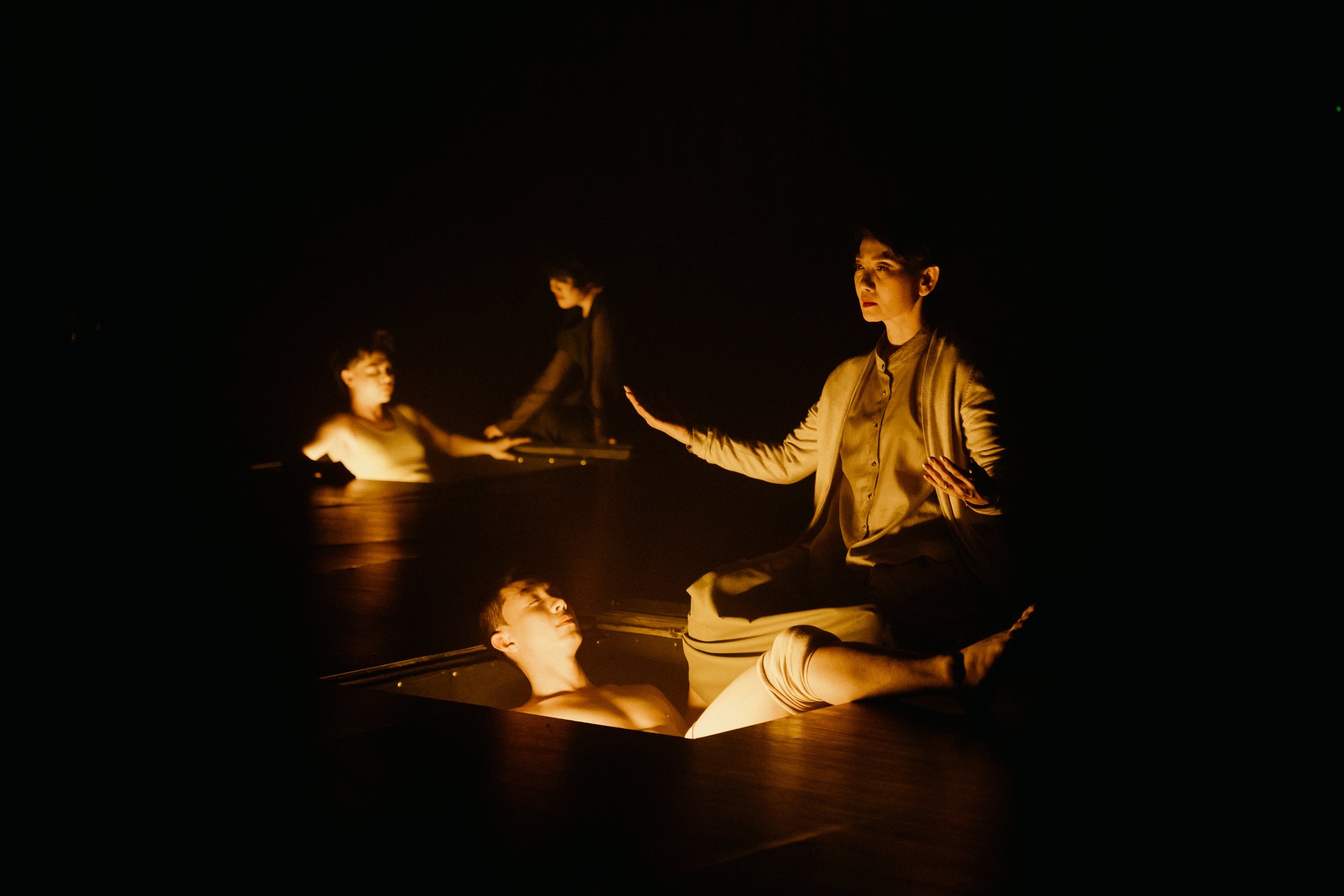Climbing the narrow staircase to the fourth floor of 5B Theatre feels like entering an “emotional resonance chamber”, where every breath, gesture and glance becomes part of the narrative. Ảo Quan, a contemporary musical written and directed by Chinh Ba, with People’s Artist Đặng Thụy Mỹ Uyên as artistic consultant and co-director, does not open with explosive sound or a startling line. It begins with a silence compressed like a slab of stone—dense, profound and fully aware of the point at which it intends to strike the audience’s consciousness.
Original Vietnamese version available here: Đọc bài viết tiếng Việt
Rather than unfolding in a linear manner, “Ảo Quan” moves like a seismic jolt: ruptured, layered, fragmented, yet each break lands with surgical precision. Memory, hallucination and reality interlace like overstretched neural fibres inside the mind of a young person desperate for an exit.
The young cast shoulders the full psychological complexity of the work: Trần Đại Chính, in the role of the elder son, channels a raw yet restrained energy, remarkable for a performer stepping onto a professional stage for the first time; Quan Phúc Toàn, the younger son, delivers a portrayal that simmers, tightens and erupts at exactly the right moment, like a tear along fragile emotional tissue. Around them, Hồ Hoàng Ngọc, Kiệt Trần, Vũ Thiên Bảo, Hồng Nguyễn, Phất Đỗ, Hứa Mạnh Dũng, Tống Liên, Xuân Huy, Minh Bách and the two young performers Đào Minh Khang and Mai Thiên Quý form a constellation of “emotional signals”, weaving together the nerve-like structure of the entire production. They do not merely act; they exist on stage, through breath, tremor, and the slightest flicker of muscle.
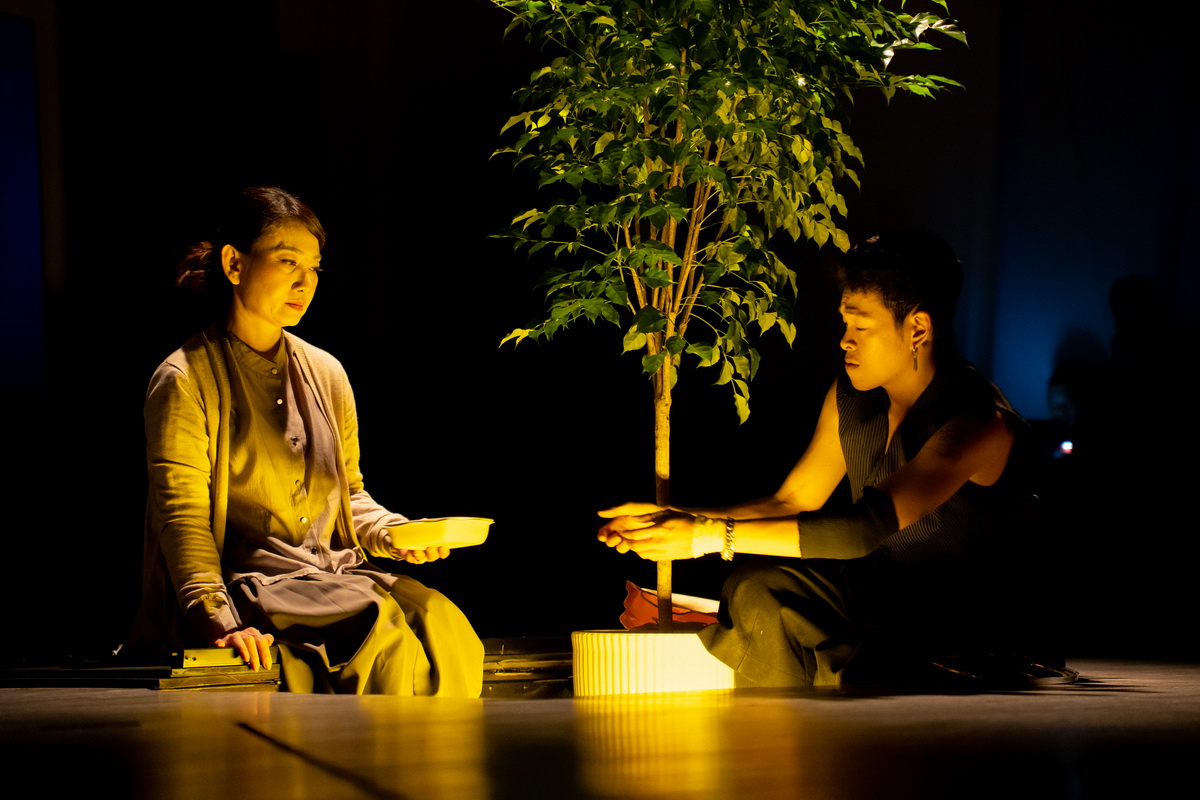
In a backstage interview, People’s Artist Mỹ Uyên offered a reflection both disarmingly simple and sharply diagnostic: “Young people today lack so many things… and easily fall into the feeling of not being enough, not being complete. We see that very clearly”.

It is this clarity that led the creative team to choose a distinctive dramaturgy: minimising dialogue and foregrounding physical language. The collisions of mental life are not articulated in words, but through a fall, a turn, a lost gaze, a clipped breath. Contemporary dance, built on rigorous physical training, becomes the spine of the narrative.
The production leaves a powerful impression thanks to a stage design constructed like the “nervous system” of the work. Lighting is controlled with near-surgical precision, threading itself through the actors’ movements to generate emotional rhythm in place of speech. The music is performed entirely live by an ensemble of electric guitar, cello, keyboard, drums and percussions, its raw, textured sound hitting the audience with an immediacy no recording could recreate. Internationally licensed songs such as Lascia Ch’io Pianga, Black for the Occasion, Stranger, Two Men in Love, To Be and Whitewash are reinterpreted in the spirit of the production, at times icy and minimalistic, at times violently constricted like a spasm of emotion, then suddenly collapsing into a hush where only breath remains. It is this rhythmic architecture that lends “Ảo Quan” a cinematic pulse despite being staged in a theatre.
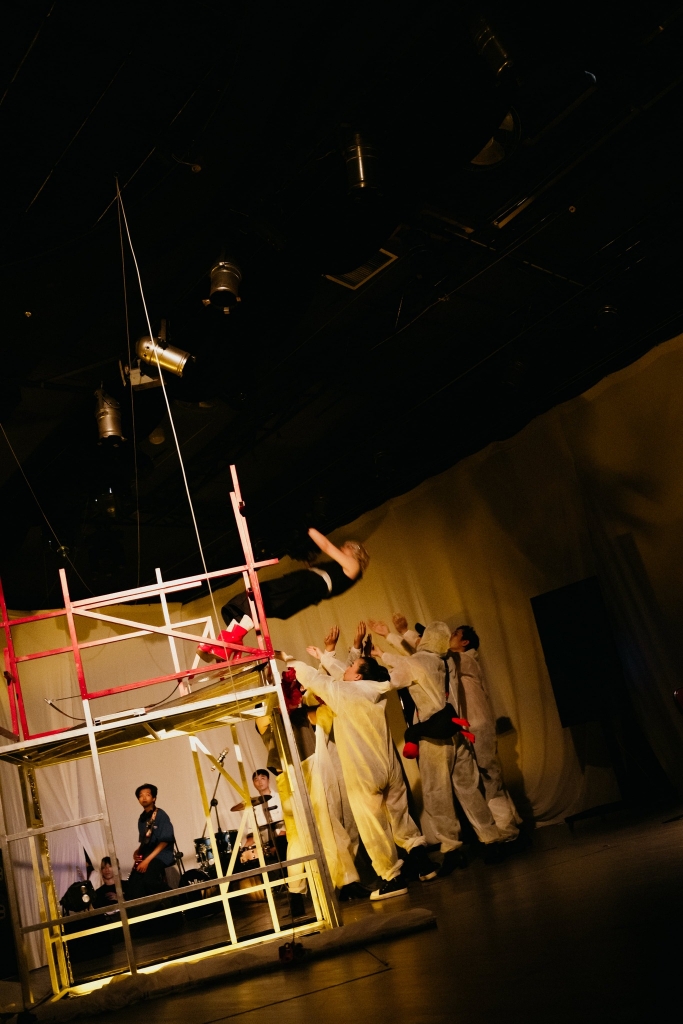
The entire set has been newly constructed, featuring an underground space that continuously opens, rises, rotates and falls, mirroring the fractured architecture of the protagonist’s mind. Coupled with rotating screens and live on-stage camera work, real and virtual images overlap in the same disorienting way the digital world distorts young people’s perceptions, blurring the boundary between “inside” and “outside”. Behind it all is a meticulous creative team, stage architect, movement ensemble, choreographers, sound and lighting designers, backstage crew, each functioning like a conductive channel helping the production remain steady under the weight of its subject matter.

Yet “Ảo Quan” is not merely an artistic endeavour; it is a declaration. When the two mothers appear, the space tightens into a single point of pain. As the “Mẹ Lớn (Elder Mother), People’s Artist Mỹ Uyên does not perform with tears but with depletion through breath, through a gaze that refuses to release its hold. Questions echo repeatedly like the refrain of a family long past repair: Why didn’t I know? Why didn’t I hear? Why did I only see it when it was too late? It is the moment when the theatre ceases to be a theatre and becomes a mental emergency room.
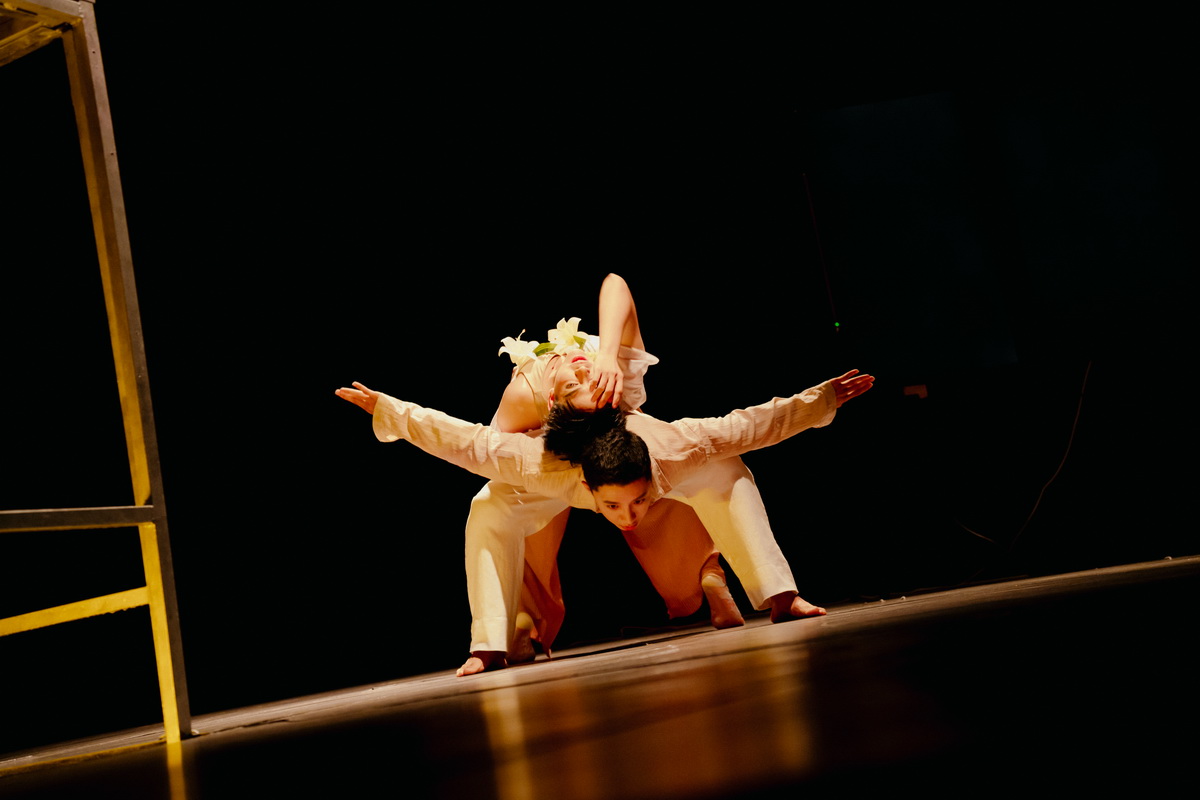
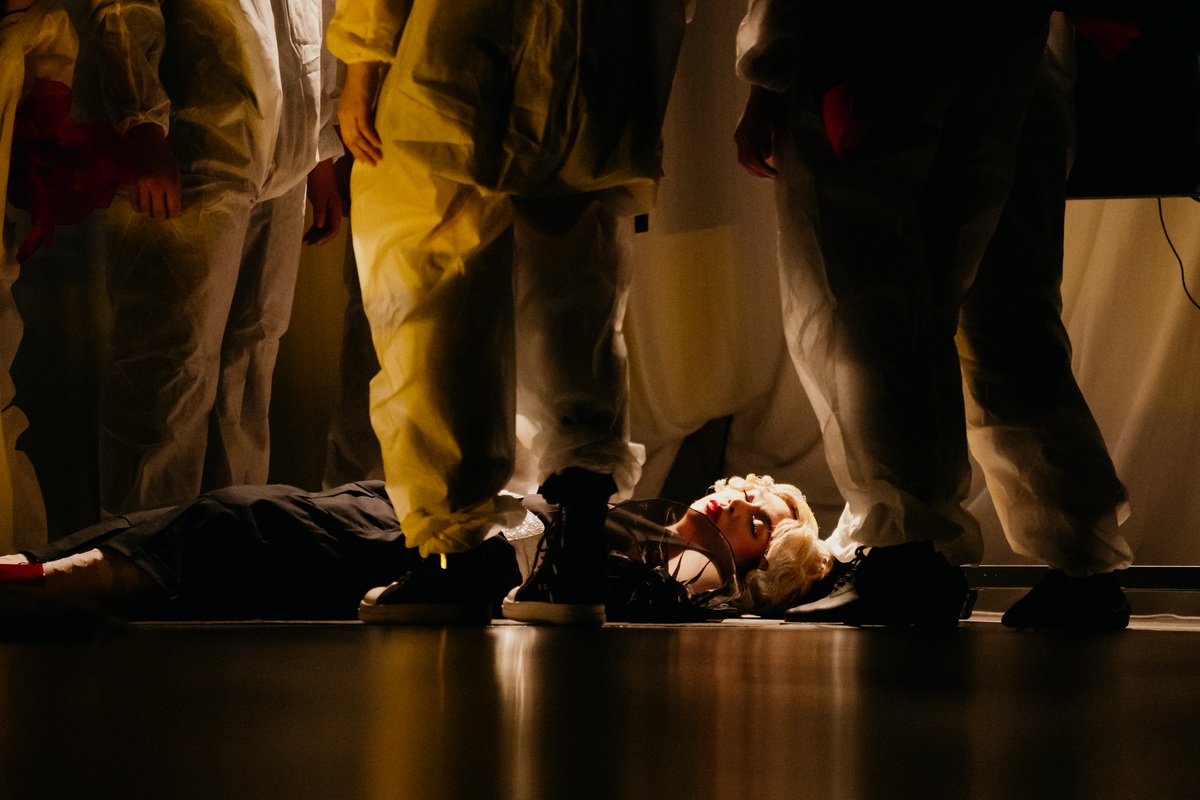
When the lights come up, the audience does not applaud immediately. They stand still for a few seconds, not out of astonishment, but because the performance has traced a quiet incision into a place many avoid confronting: young people struggling inside rooms that look ordinary, while adults assume time will mend everything. “Ảo Quan” makes it painfully clear that some wounds do not self-heal, some distances do not close on their own, and some cries for help are never received or received but never truly heard. As Mỹ Uyên concludes: “In the end, I simply want to say… this is a matter of mental health”.
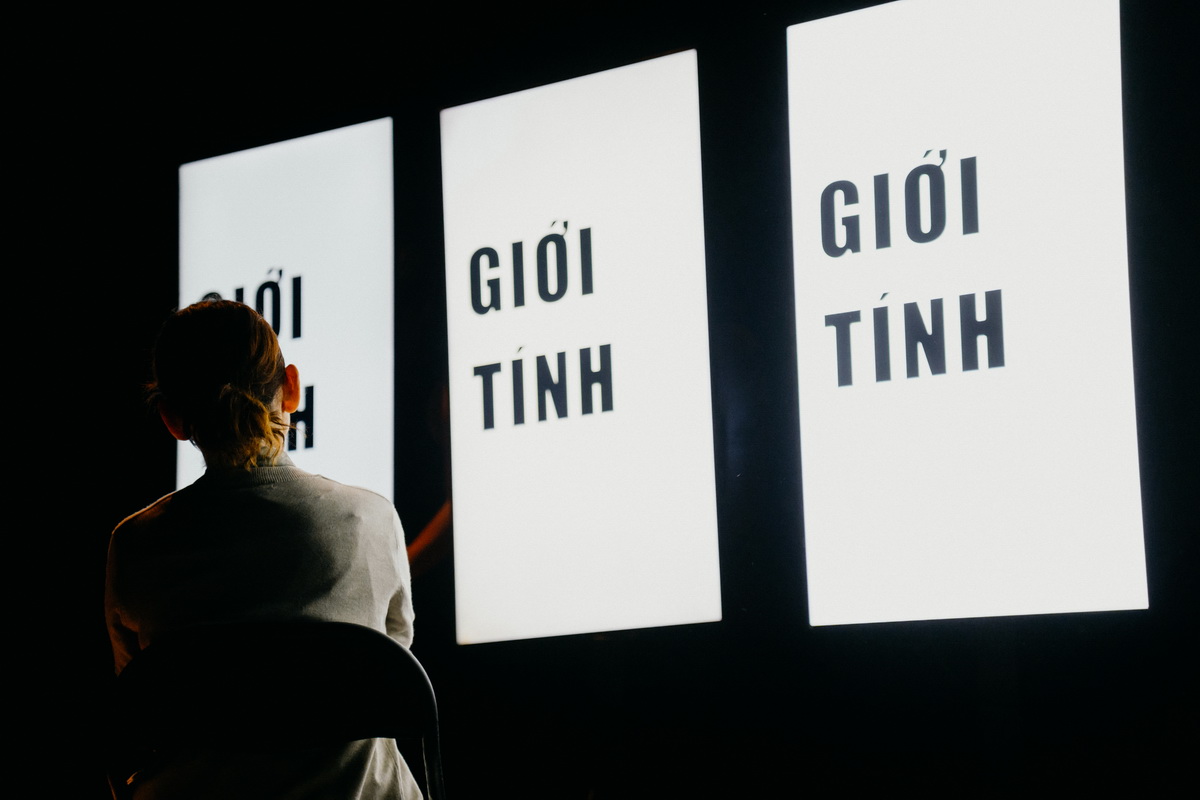
In an era when stage lighting often serves only to polish the surface, “Ảo Quan” chooses to illuminate the cracks where light is not for celebration, but for clarity. Through that clarity, the audience recognises what they have long avoided: each person carries a fracture unseen by others. A production of merely ninety minutes, yet it opens a vast conversation between the young and the grown, between those who leave and those who remain, and between each of us and the silence we carry. Leaving the theatre, one understands without needing words: no one should be left alone inside their own illusions; there is always someone waiting to listen if only we choose to speak.
Text: MINH NGUYỄN | Photo: Cừu Con, Tuấn, Dande Lam
